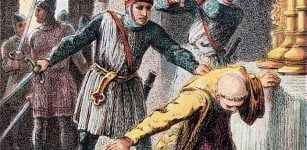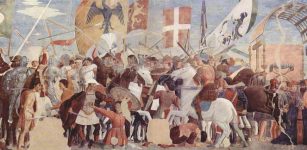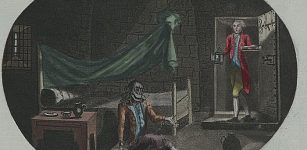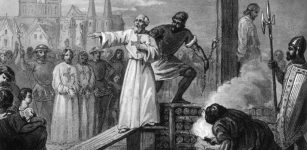On This Day In History: Battle Of Lihula Between Swedish And Estonian Armies Was Fought – On August 8, 1220
MessageToEagle.com – On August 8, 1220, Battle of Lihula was fought between invading Swedish army and Estonians for the control of a castle in Lihula, Estonia in 1220.
The castle of Lihula was first mentioned in 1211, but the site was used as a fortress since the Iron Age.
The exact date remains uncertain, but some historians suggest that the battle took place on August 8. The event is described in the ‘Chronicle of Henry of Livonia’ and the ‘Livonian Rhymed Chronicle’.
Swedish troops, initially led by King John, had earlier in 1220 invaded the western coast of Estonia, an area not yet conquered by the Teutonic Knights. The Swedish army took the Lihula stronghold and set up a small garrison. Swedish jarl Charles the Deaf (Swedish: Karl Döve) and Bishop Karl Magnusson of Linköping, both from the powerful House of Bjelbo, also remained in the castle.
On this day, an armies of Oeselians (Ests) and Rotalians encircled the castle at dawn. The castle was set ablaze in the course of the fierce battle that ensued. Swedish troops tried to make their way out, but they were killed on site except for a few soldiers that succeeded in escaping to Tallinn, which was held by Denmark. The jarl, the bishop, and almost 500 other Swedes were killed, leaving no Swedish presence in Estonia at all.
The short-lived Swedish attempt to gain foothold in Estonia was motivated by the quickly advancing Danish and German crusaders who had been able to conquer most of the area in the early 13th century.
Defeat in the Battle of Lihula stopped the Swedish expansion to Estonia for more than 300 years.
It was not until 1561 that Sweden succeeded in establishing its rule in Estonia.
MessageToEagle.com











